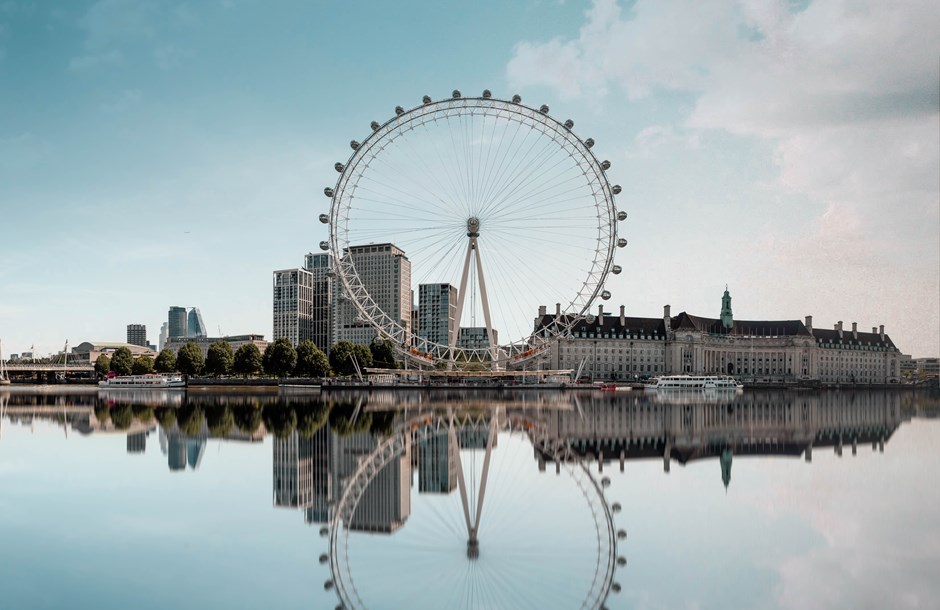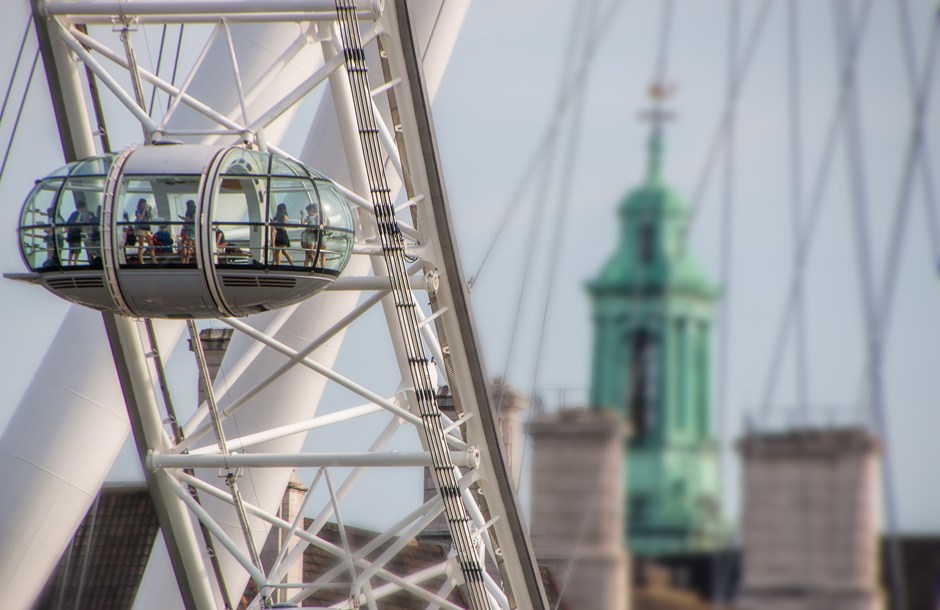Iconic buildings: London Eye facts
When London was about to party like it was (and in fact it was) 1999, the city needed a building to mark the moment. The London Eye, on the south bank of the River Thames, was the result.
At first, only intended to be a temporary structure to celebrate the millennium, it is now an ‘Eye-conic’ part of the London skyline, and still the capital’s most popular paid tourist attraction, with 3.5 million customers every year.
Here are some fascinating London Eye facts.

In 1999, it was the tallest ‘wheel’ in the world
At the time of its opening, the London Eye was the tallest Ferris wheel in the world, at 443 feet (135 metres) high. Since then, however, four wheels have surpassed it: the Star of Nanchang in China (520 ft), the Singapore Flyer (541 ft), the High Roller in Las Vegas (550 ft) and then most recently the Ain Dubai in the United Arab Emirates, at a vertigo inducing (for some) 820 ft (250m).
It remains the highest Ferris wheel in Europe.
It was never supposed to be permanent
Some thought the London Eye would be a novelty (anyone remember the Millennium Dome?), and indeed it was only planned to be a temporary structure. However, its popularity was such that in 2002 Lambeth Council granted it a permanent licence.
There are 32 capsules, but it skips number 13
Did you know that the Eye has 32 capsules, to represent the 32 boroughs of London? The capsules are numbered 1-12, and 14-33. There is no number 13, as is the case with many observation wheels. No one really wants to be in capsule number 13, with its reputation for bad luck, 443 feet above the ground, do they?
Wise choice, London Eye operators.

It has gone by many names
This landmark of London has been known variously by several names. In its early years, it was possibly as well known as the Millennium Wheel. A succession of sponsors have come and gone, leaving their mark on it as the British Airways London Eye, the Merlin Entertainments London Eye, the EDF Energy London Eye and the Coca-Cola London Eye.
Is the London Eye a Ferris wheel or not?
The London Eye differs from most Ferris wheels because it only has one A-frame upright support on one side of the wheel. Its capsules are also fixed above the wheel’s rim, rather than hanging between the rim’s struts.
When it was opened, the Eye was marketed as the ‘world’s tallest Ferris wheel’, but now it has slipped down those rankings its operators refer to it as a ‘cantilevered observation wheel’. However, most people still think of the Eye as a Ferris wheel.
It was created by a husband-and-wife team
Husband and wife architects David Marks and Julia Barfield came up with the idea of the Eye in 1993 for a competition to design a landmark for the millennium. Their entry did not win, and the competition was shelved, but David and Julia persevered.
Their practice, Marks Barfield Architects, designed and built the Eye. Construction started in 1998. The wheel was assembled in sections on specially made islands on the Thames, before being lifted into position over seven painstaking days.
Imagine being the civil engineer or project manager on the London Eye!
The London Eye runs on sustainable oil
The oils used to run the Eye are all biodegradable; they cause no harm to wildlife and the grease is even edible.
It’s only twice as fast as a tortoise
The Eye was designed so that its capsules don’t need to stop for passengers to get on and off. It travels round at 26cm per second, or 0.6 miles an hour, around twice as fast as a tortoise sprinting. Each rotation of the wheel lasts 30 minutes.
The London Eye is very popular with couples
It’s a romantic place, the Eye. There have been 5,000 marriage proposals and 500 weddings held in the capsules. Up to 16 people can attend the ceremony inside a capsule – perfect for those who want a smaller wedding with incredible views!
Inspired by the Eye?
If you have found these facts about the London Eye interesting, you might like to know more about how other famous buildings were built or some of the world’s most amazing buildings. It is the dream of being involved in the construction of buildings like these that makes many people want to get into construction in the first place.
